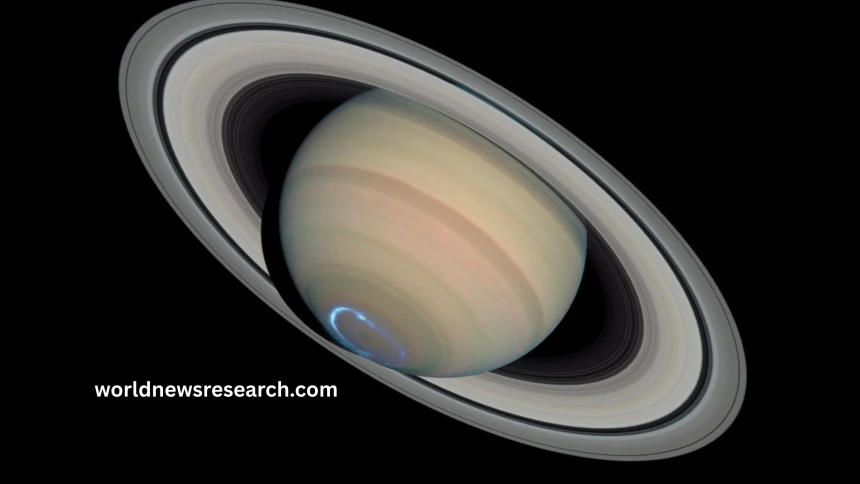Saturn, the sixth planet from the Sun, is renowned for its spectacular rings and an extensive family of moons that orbit it. With nearly 200 known moons, Saturn holds the record for the highest number of natural satellites among the planets in our solar system. This incredible discovery is the culmination of decades of astronomical research, advanced technology, and relentless human curiosity. At the heart of this achievement is one astronomer whose dedication and innovative work played a pivotal role in identifying nearly 200 moons orbiting this gas giant.
This article delves into the fascinating journey of that astronomer, whose name has become synonymous with Saturn’s expanding celestial family. We will explore the challenges they faced, the techniques they employed, and the profound impact of their discoveries on planetary science and our broader understanding of the solar system.
Saturn and Its Moons: A Historical Overview
The fascination with Saturn’s moons dates back to the 17th century when the invention of the telescope opened up the universe for exploration. In 1655, Dutch astronomer Christiaan Huygens became the first to observe Titan, Saturn’s largest moon, using a telescope of his own design. Since then, discoveries have continued at an accelerating pace, especially over the last few decades.
By the late 20th century, scientists had identified more than 20 moons around Saturn. However, many of these were large and relatively easier to observe. The smaller, more distant moons remained elusive due to their faintness and the interference caused by Saturn’s bright rings and the glare of the Sun.
The advent of modern technology, including high-powered ground-based telescopes equipped with sensitive digital cameras and space missions like the Cassini spacecraft, revolutionized our ability to observe these distant objects. Using these tools, astronomers began to identify dozens of smaller moons, many with unusual orbits and characteristics.
Meet the Astronomer: Scott S. Sheppard
One astronomer stands out in the quest to map Saturn’s moons — Dr. Scott S. Sheppard. With a background in planetary astronomy, Sheppard has dedicated much of his career to discovering and studying small bodies in the outer solar system. His work focuses on the irregular satellites of the giant planets, including Jupiter, Saturn, Uranus, and Neptune.
Born with a fascination for the stars, Sheppard pursued his studies in astronomy and planetary science, eventually earning a Ph.D. His passion for discovering new worlds beyond the known planets fueled his commitment to exploring Saturn’s complex system.
Sheppard’s research often involves painstaking observations, analyzing countless images taken over many nights to identify the faint points of light that might be new moons. His approach combines patience, expertise, and a deep understanding of orbital mechanics.
The Discovery Process: Tools and Techniques
Discovering moons, especially small and faint ones, is no small feat. It requires cutting-edge telescopes, advanced imaging technology, and sophisticated data analysis methods. Sheppard and his team primarily use large ground-based telescopes located in remote, dark-sky locations such as Mauna Kea in Hawaii and Cerro Tololo in Chile.
Using wide-field cameras attached to these telescopes, the team takes repeated images of the area around Saturn over several nights. By comparing these images, they look for objects that move consistently against the background stars. The motion indicates that these are moons orbiting Saturn rather than distant stars or galaxies.
Once potential candidates are identified, follow-up observations are crucial to confirm their orbits. This step involves complex calculations to determine if the object’s trajectory matches that of a satellite orbiting Saturn.
Sheppard’s expertise in orbital dynamics allows him to distinguish between true moons and transient objects like asteroids or debris. His discoveries often require months or even years of observations to confirm.
Breakthrough Discoveries and Contributions
Thanks to Sheppard’s efforts and collaboration with other astronomers, the known population of Saturn’s moons expanded dramatically. Between 2000 and 2020, Sheppard and his team announced the discovery of dozens of previously unknown moons, contributing significantly to the total count of nearly 200.
Many of these moons are small — often just a few kilometers across — and exhibit irregular orbits, suggesting they may be captured objects rather than bodies formed alongside Saturn. Some orbit retrograde, moving opposite to Saturn’s rotation, while others have highly elliptical paths.
Notably, Sheppard’s work has helped categorize these moons into different groups based on their orbital characteristics, offering clues to their origin. For example, some moons are believed to be fragments from larger bodies that broke apart due to collisions or tidal forces.
Among the moons discovered are several that challenge our understanding of satellite formation, showing the dynamic and chaotic environment of the outer solar system.
Impact on Astronomy and Planetary Science
The discovery of so many moons around Saturn has profound implications for astronomy. It helps scientists better understand how planets and their satellites form and evolve. The irregular moons provide evidence of past gravitational interactions and collisions, shedding light on the history of the solar system.
Sheppard’s discoveries have also influenced the planning of future space missions. Knowing the exact number and orbits of moons helps mission planners navigate spacecraft safely and identify targets for detailed study.
Moreover, studying these moons offers insights into conditions that might support life. Some of Saturn’s larger moons, like Enceladus and Titan, are prime candidates in the search for extraterrestrial life due to their subsurface oceans and atmospheres.
Challenges and Perseverance
The road to these discoveries was not without challenges. Detecting faint moons requires long hours of observation, data processing, and sometimes dealing with equipment limitations or adverse weather conditions at observatories.
Sheppard’s perseverance in the face of these obstacles exemplifies the dedication needed in scientific research. His meticulous approach and willingness to collaborate with other experts have been key to his success.
The Future of Saturn Moon Discoveries
With ongoing advances in telescope technology and upcoming missions, the search for more moons and small bodies continues. Astronomers are hopeful that new instruments, including the James Webb Space Telescope and next-generation ground-based observatories, will uncover even more about Saturn’s satellite system.
Sheppard remains active in this field, pushing the boundaries of what we know about the outer solar system. His work continues to inspire new generations of astronomers.
Frequently Asked Question
Who is the astronomer credited with discovering nearly 200 moons of Saturn?
Dr. Scott S. Sheppard is one of the leading astronomers who has contributed significantly to the discovery of nearly 200 moons orbiting Saturn through his dedicated observations and research.
How do astronomers discover new moons around a planet like Saturn?
Astronomers use powerful telescopes equipped with sensitive cameras to take repeated images of the area around Saturn. By comparing these images over several nights, they identify moving objects that orbit the planet, distinguishing moons from stars and other background objects.
Why are there so many moons around Saturn?
Saturn has a strong gravitational pull that allows it to capture many small objects. Some moons formed alongside Saturn, while others may be captured asteroids or fragments from collisions, resulting in a large number of satellites with diverse sizes and orbits.
What makes discovering small moons difficult?
Small moons are faint and often obscured by the brightness of Saturn and its rings. They can also have irregular orbits, making it challenging to track their movement and confirm their status as moons.
What is the significance of discovering these moons?
Discovering moons helps scientists understand the formation and evolution of planetary systems, the history of collisions and gravitational interactions, and can provide clues about potential habitats for life in the solar system.
How many moons does Saturn currently have?
As of the latest discoveries, Saturn has nearly 200 confirmed moons, making it the planet with the most natural satellites in our solar system.
Are all of Saturn’s moons similar?
No, Saturn’s moons vary widely in size, composition, and orbit. Some are large and spherical, like Titan, while others are small, irregularly shaped, and orbit at great distances or in unusual paths.
What technologies helped in discovering these moons?
Ground-based telescopes with large apertures, sensitive digital cameras, and space missions like NASA’s Cassini spacecraft have been essential. Advanced image processing and orbital calculations also play a key role.
What role did the Cassini mission play in moon discoveries?
The Cassini spacecraft provided detailed images and data of Saturn and its moons, confirming some discoveries and revealing new information about their composition, geology, and atmospheres.
Will more moons of Saturn be discovered in the future?
Yes, with ongoing advancements in telescope technology and new missions planned, astronomers expect to discover even more moons around Saturn and gain a deeper understanding of its satellite system.
Conclusion
The discovery of nearly 200 moons around Saturn is a testament to the power of human curiosity, technology, and collaboration. Dr. Scott S. Sheppard’s significant contributions have not only expanded our knowledge of Saturn but also deepened our understanding of planetary systems as a whole.





